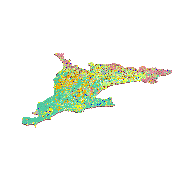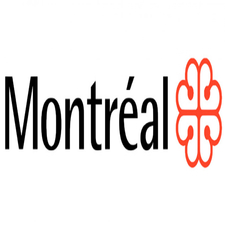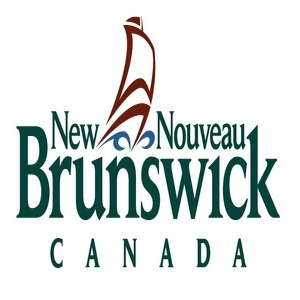DXF
Type of resources
Available actions
Topics
Keywords
Contact for the resource
Provided by
Formats
Representation types
Update frequencies
status
-

To support improved groundwater geoscience knowledge for southern Ontario, a regional 3-D model of the surficial geology of southern Ontario has been developed as a part of a collaboration between the Ontario Geological Survey and the Geological Survey of Canada. Covering approximately 66,870 km2 in area, the model is a synthesis of existing geological models, surficial geology mapping, and subsurface data. The model is a simplified 9-layer reclassification of numerous mapped local surficial sediment formations in places over 200 m thick with a total volume of approximately 2,455 km3. The model integrates 1:50,000 scale surficial geology mapping with 90 m bathymetrically corrected topographic digital elevation model (DEM) and 8 existing local 3-D models. Archival subsurface data include 10,237 geotechnical and stratigraphic boreholes, 3,312 picks from geophysical surveys, 15,902 field mapping sites and sections, 537 monitoring and water supply wells and 282,995 water well records. Roughly corresponding to regional aquifer and aquitard layers, primary model layers are (from oldest to youngest): Bedrock, Basal Aquifer, Lower Sediment, Regional Till, Post Regional Till Channel Fill, Glaciofluvial Sediment, Post Regional Till Mud, Glaciolacustrine Sand and Recent Sediment / Organics. Modelling was completed using an implicit modelling application (LeapFrog®) complemented by an expert knowledge approach to data classification and rules-based Expert System procedure for data interpretation and validation. An iterative cycle of automated data coding, intermediate model construction and manual data corrections, expert evaluations, and revisions lead to the final 3-D model. A semi-quantitative confidence assessment has been made for each model layer surface based on data quality, distribution and density. This surficial geology model completes the development of a series of regional 3-D geological and hydrogeological models for southern Ontario.
-

Digital model of 3D LOD2 buildings with textures of the Le Sud-Ouest and Ville-Marie borough in CityGML and 3DM format. The [digital terrain model (MNT)] (/city-of-montreal/model-numerique-de-terrain-mnt) of the borough is also available to present the complete digital model of the territory. **This third party metadata element was translated using an automated translation tool (Amazon Translate).**
-

Digital model of 3D LOD2 buildings with textures in CityGML and 3DM format of some boroughs of Montreal. The [digital terrain model (MNT)] (https://donnees.montreal.ca/dataset/modele-numerique-de-terrain-mnt) of these districts is also available to present the complete digital model of the territory. **This third party metadata element was translated using an automated translation tool (Amazon Translate).**
-

The digital terrain model (DTM) is a simplified representation of ground altimetry. The available data is in the form of an irregular triangular mesh (TIN). This is polygon numerical geographic data constructed by triangulating a set of points. The vertices are connected to a series of segments to form a mesh of triangles of different dimensions. This representation can be used as a basis for the 3D buildings of the digital base model. It should be noted that the data made available by the City is proposed for planning purposes and not for construction purposes given the associated decimeter details. The [3D buildings 2016 (LOD2 model with textures)]] (https://donnees.montreal.ca/ville-de-montreal/batiment-3d-2016-maquette-citygml-lod2-avec-textures2), the [2013 3D buildings (2013 3D buildings (CityGML LOD2 model with textures)] (/city-of-montreal/model-numeric-plateau-mont-royal-buildal-build2-buildings-lod2-with-textures), or the [3D buildings 2009 (CityGML LOD2 model with textures)] (/city-of-montreal/model-numeric-plateau-mont-royal-build2-buildings-lod2-with-textures), or the [3D buildings 2009 (CityGML LOD2 model with textures)] (/city-of-montreal/model-numerique-plateau-mont-royal-batiments-lod2-with-textures), or the [3D buildings 2009 (CityGML LOD2 model with textures)] (/city-of-montreal/model-numeric-s-citygml-lod2-with-textures) complement the digital terrain model in the urban territorial representation of Montreal. The [elevation data from aerial LiDAR] (/city-of-montreal/lidar-aerien-2015) are also available on the portal.**This third party metadata element was translated using an automated translation tool (Amazon Translate).**
-

SQRC grid (Quebec Cartographic Reference System) at a scale of 1:500 and 1:1000 of Montreal Island. The dxf file contains an underlying layer of streets for better location.**This third party metadata element was translated using an automated translation tool (Amazon Translate).**
-

County boundaries for New Brunswick.
-

The dataset shows the distribution and spatial extent of the 3D models that were created in the context of Canadian aquifers mapping projects from the Geological Survey of Canada.
 Arctic SDI catalogue
Arctic SDI catalogue